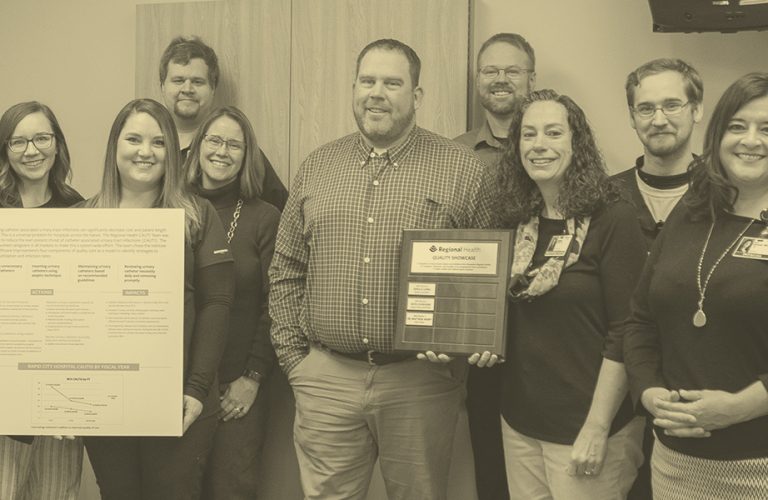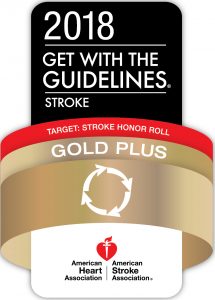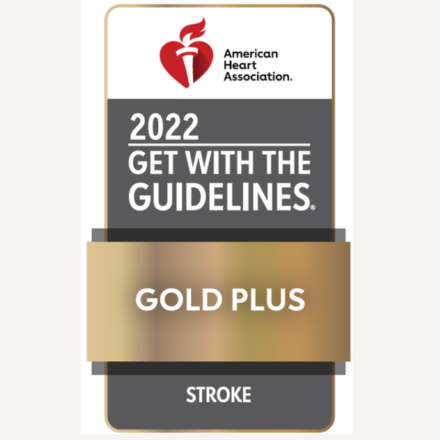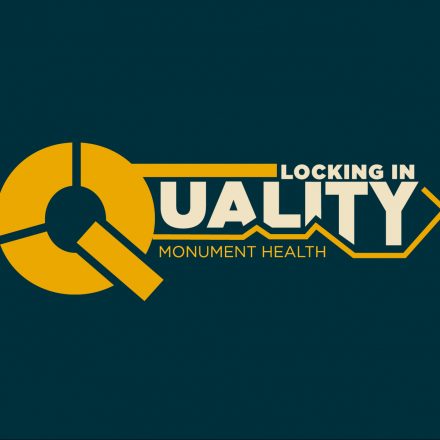
Every day, Monument Health physicians and caregivers strive to provide you the kind of care you deserve. High-quality care is our top priority. We have received awards and recognition for quality and safety. Yet we continue to look for ways to improve the processes, protocols and practices that make our hospitals and clinics the safest and most effective healing environments possible.
Download the Monument Health Safety & Quality Program information sheet.

Monument Health Initiatives
Diabetic Education
A disease with life-threatening complications, diabetes affects a large number of western South Dakota residents. To help fight diabetes, we have:
- Established regional outreach clinics throughout western South Dakota.
- Standardized case management for care and testing.
- Introduced Diabetes Champions to help patients with assessment, care and education.
- Worked closely with inpatients on monitoring and education.
- Used community and national resources to help patients get medications.
Result: Levels of HbA1c, a key measure of blood sugar over time, have been improving in the region.
Hand Hygiene
Good hand hygiene — washing hands or using hand sanitizer — is the number one way to prevent the spread of germs. Health care workers should wash their hands before and after caring for each patient. It is important for patients, families and visitors to also practice good hand hygiene.

Sanitize Now and Protect (SNAP)
By educating our communities on proper handwashing we are helping with community health and wellness.
Hand hygiene is a top priority at Monument Health. Hand hygiene means cleaning your hands by either washing them with soap and water, or by using a hand sanitizer. Hand hygiene is the number one way to prevent the spread of germs and to prevent infections.
At Monument Health, more than 130,000 hand hygiene observations are monitored each month. The information is used to help to continually improve hand hygiene in our health system so that we can provide the safest and best care to all patients.
Why is it important?
The Centers for Disease Control and Prevention (CDC) says washing hands is one of the most effective ways to prevent the spread of diseases and infections. Germs can live on surfaces for hours — or even days — and are often passed from person to person through physical contact.
Health care workers come in contact with patients, equipment and other items in patient rooms. In the hospital, there are many opportunities for hand hygiene to help keep our patients safe. Ensuring doctors, nurses and other staff have clean hands is critical to prevent the spread of illness.
What is Monument Health doing to continue to improve?
Monument Health strives for 100 percent hand hygiene compliance for all health care workers.
Awareness and Education Campaigns
Regardless of job role, every employee of Monument Health must practice good hand hygiene to protect our patients, visitors, colleagues, and friends.
Posters and signs are placed around the hospital as reminders for health care workers, patients and visitors to wash their hands or use a sanitizing gel. Staff and patients are also encouraged to speak up if they notice someone forgot to wash their hands.
Monument Health also educates staff that may not have direct patient contact but still play a vital role in infection prevention through good hand hygiene.
Keeping Staff Accountable
We continually use signs and education to remind staff of the importance of hand hygiene. All staff are encouraged to speak up if they see someone who has forgotten to wash their hands.
Every Monument Health hospital also has employee recognition programs for staff members and units excelling at consistently practicing good hand hygiene. Many of our facilities also have programs in place for direct feedback and coaching for staff members who were observed forgetting to perform hand hygiene.
How can patients and families support safety?
Patients and families are encouraged to speak up and ask health care providers if they washed their hands prior to entering the patient room.
Patients and visitors should wash their own hands often, including before eating, after using the restroom and after touching any surface in the hospital room. Visitors should also follow any additional infection control measures, such as wearing an isolation gown, put in place by the health care team.
Infection Prevention
Monument Health implemented best practices procedures to prevent Central Line Associated Blood Stream Infections (CLABSI) and Clostridium difficile (C. diff).
- CLABSI – Best practices insertion procedures and best practices in maintenance in dressing change procedures resulted in fewer central line infections.
- C. diff — Antimicrobial Stewardship, environmental cleaning processes and use of ultraviolet lights resulted in a decrease in C. diff infections. (Monument Health scores better than the national benchmark in this category.)
Result: Monument Health has received national recognition from the Agency for Healthcare Research and Quality (AHRQ) for its decreases in CLABSI and Catheter Associated Urinary Tract Infections (CAUTI).
Stroke Process
In fiscal year 2018, Monument Health shortened the average time between arrival at the Emergency Department and the administration of Alteplase (clot buster) to 55 minutes.
The recommended time is within one hour.
We developed a “pit stop” process, a multidisciplinary team response to “stroke alert” patients, with assessment and care initiated before the patient is placed in a room.
Result: 55-minute average response time.

Team-Based Care
- In Custer, we launched a process that allows ambulatory physicians to focus on patient care, rather than documentation.
- We standardized workflow for patient care.
- We ensure that all caregivers can use their expertise to collaboratively provide care.
- We provide timely access to outpatient care.
Quality Showcase Winners
Monument Health’s Quality Showcase celebrates improvement projects and initiatives led by caregivers and physicians throughout the organization. Projects that contribute to patient safety, quality and evidence-based practice are submitted for recognition on a quarterly basis. Read about our most recent showcase winners’ projects:
Not Just a Popup Anymore (Fourth Quarter, 2021)
Best Practice Advisories, or BPAs, are pop-ups that occur in Epic, intended to provide targeted, patient-specific clinical guidance for Epic users. While meant to be helpful, they can also interrupt physician or caregiver workflow when they’re not appropriate. By reviewing what popups were interruptive, and taking that information to the Physician Advisory Committee, the Healthcare Informatics Council and the Clinical Decision Support Team to develop processes to improve the BPAs.
The result was identifying more than 600,000 interruptive BPAs and a 13 percent reduction in the total number of BPAs. This saved an estimated 860 provider and caregiver hours. The next step is to continue evaluating interruptive BPAs and to collect data related to those changes.
Obtaining Repeat Lactic Acids to Improve Compliance with the CMS Sep-1 Bundle (Third Quarter, 2021)In 2015, the Centers for Medicare and Medicaid Services (CMS) began requiring hospitals to collect specific information for sepsis patients, including an initial lactic acid test. Identifying sepsis can sometimes be difficult because there is no specific test for diagnosis, but the lab test that measures lactic acid is one way to identify possible sepsis patients.
The Sepsis Committee focused on the Emergency Department, because 85 percent of Rapid City Hospital’s sepsis patients came through the ED. By updating the ED nursing order set to include the initial lactic acid test and a second test scheduled four hours from the initial test, they improved compliance. In early 2021, an upgrade to Epic made it possible to automate this process, which brought compliance to 96 percent.
The lactic acid reflex panel has been rolled out hospital- and system-wide. Next steps include helping the entire hospital and system to get the education to help them utilize the tools that Epic has to improve care.
Assessment of Compliance with Order Set and Bundle for Management of Staphylococcus aureus Bacteremia (Second Quarter, 2021)
Patients who have the Staphylococcus aureus bacteremia pathogen have an increased risk for morbidity and mortality, and there is a high rate of recurrence for this pathogen. The primary objectives of this study were to evaluate compliance with the S. aureus bacteremia bundle and educate providers on areas of improvement. The bundle went live in November, 2019, with a lot of education for and input from a number of hospital medical staff from all of Monument Health’s hospitals. The team identified six core elements in the S. aureus bacteremia bundle, collected data from the charts of patients with Staph aureus bacteremia and identified how many of those patients experienced those core six elements — and the data showed better outcomes with bundle compliance Because early optimization of therapy, identification and removal of the source and imaging are all essential for successful treatment, bundle compliance makes a significant difference in the success of treatment.
Impact of Clinical Navigation on Orthopedic Surgical Care (First Quarter, 2021)
At Monument Health Orthopedic & Specialty Hospital, a review of orthopedic surgical care patient experience demonstrated a need for improved clinical navigation. By assigning nurse navigators to surgeons and groups and creating a pre-surgical checklist, they were able to prevent duplication of care and contradictory instructions, and consolidate communication with patients. Overall this streamlined the workflow, improved efficiency, reduced confusion and improved patient experience.


